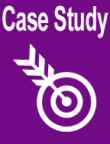
Visit Our Sponsors |
|
|
|
|
|
|
|
|
|
|
|
|
|
|
|
|
|
|
|
|
|
|
|
|
|
|
|
|
|
|
|
|
|
|
|
|
|
|

Molex Inc. approaches the issue of complexity with simplicity.
The maker of high-tech components can't cut down on the number of partners in its supply chain, or the processes required to run it. But it can avoid the use of multiple information systems at various locations worldwide. It's a lesson that many companies have yet to learn.
Based in Lisle, Ill., Molex is the world's second-largest manufacturer of electronic and electrical connectors and switches. (Only Tyco International is larger.) Its products can be found in computers, cell phones, home appliances, automobiles, telecommunications devices and industrial machines. Sales in fiscal 2004, ending June 30, were nearly $2.5bn.
There's nothing simple about the Molex supply chain. It involves more than 100,000 distinct products. In a typical quarter, Molex will ship around 48,000 part numbers to 16,000 customer sites in 70 countries. It operates 55 manufacturing plants in 18 countries, with a 28-year presence in China. And it maintains 27 developer groups in 15 countries.
The nature, origin and value of parts differ widely. More than half of all product moves from one company site to another, making Molex its own biggest supplier. Components pass through several processes, including plastic molding, metal stamping, electroplating of metal contacts, and assembly. Molex also makes larger "value-added" units composed of multiple parts, including boards and harnesses.
Any plant might be a supplier to another. Items produced in Japan are sold in Europe; those made in North America can end up in Japan. "If you linked all our plants, it would look like an airline route map," says Dave Hubert, who manages the SAP systems at Molex.
It's not unusual for multiple information systems to grow up within such a complex operation. But Molex has wielded iron discipline over its IT program from the start. In February 1996, it implemented the enterprise resource planning system of SAP AG in Singapore. From there, the technology was extended to more than 45 Molex plants and 17 active sales companies in 16 countries. The same software links all global locations, avoiding the snags that arise when companies run incompatible ERP systems.
"That's turning out to be a best practice in the industry," says Don Phillips, director of high-tech business strategy with Walldorf, Germany-based SAP.
Support From the Top
"We're very stubborn people," explains Gary Matula, Molex's vice president of systems. Corporate IT staff had backing from top management from the start, he adds, so that individual locations weren't given the latitude to adopt their own systems.
The final ERP installation, capping what Matula calls "a sizeable challenge," took place in Japan in August 1999. Then Molex went searching for applications to link manufacturing with other parts of the supply chain.
Once again, it stuck with SAP. Among the first add-ons was the vendor's business warehouse (BW) tool, creating a central repository for data contained in the various SAP modules. "BW allows you to accumulate data and map it into a structure that reflects the elements you want to report on," Matula says. Molex also acquired SAP modules to manage customer relationship management (CRM) and advanced planning and optimization (APO).
| "If you linked all our plants, it would look like an airline route map." - Dave Hubert of Molex | |
RELATED CONTENT
RELATED VIDEOS
Timely, incisive articles delivered directly to your inbox.

